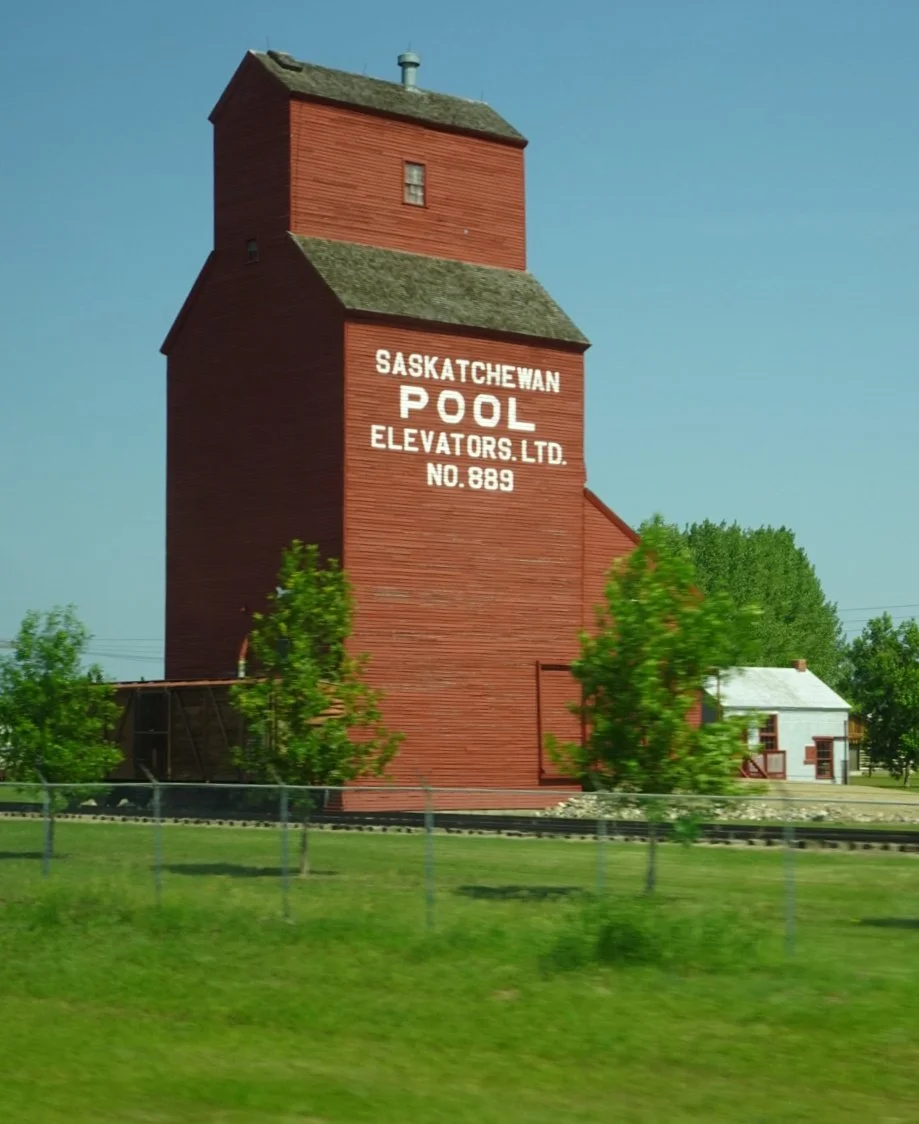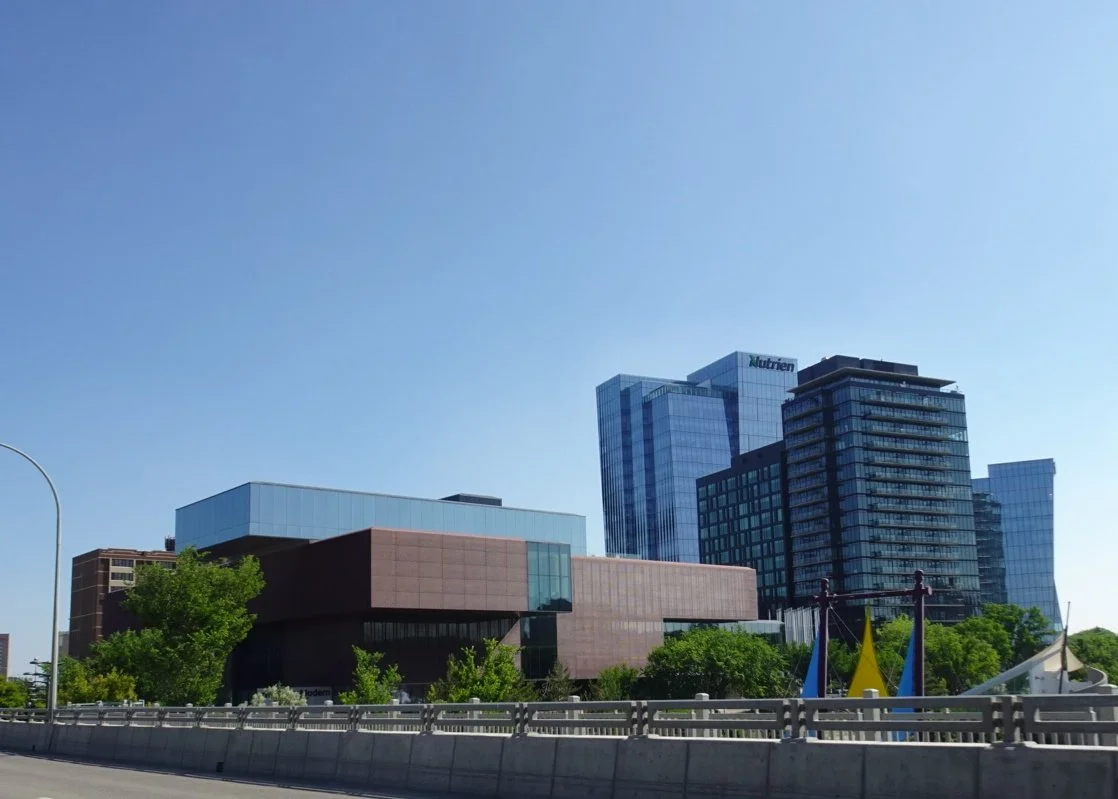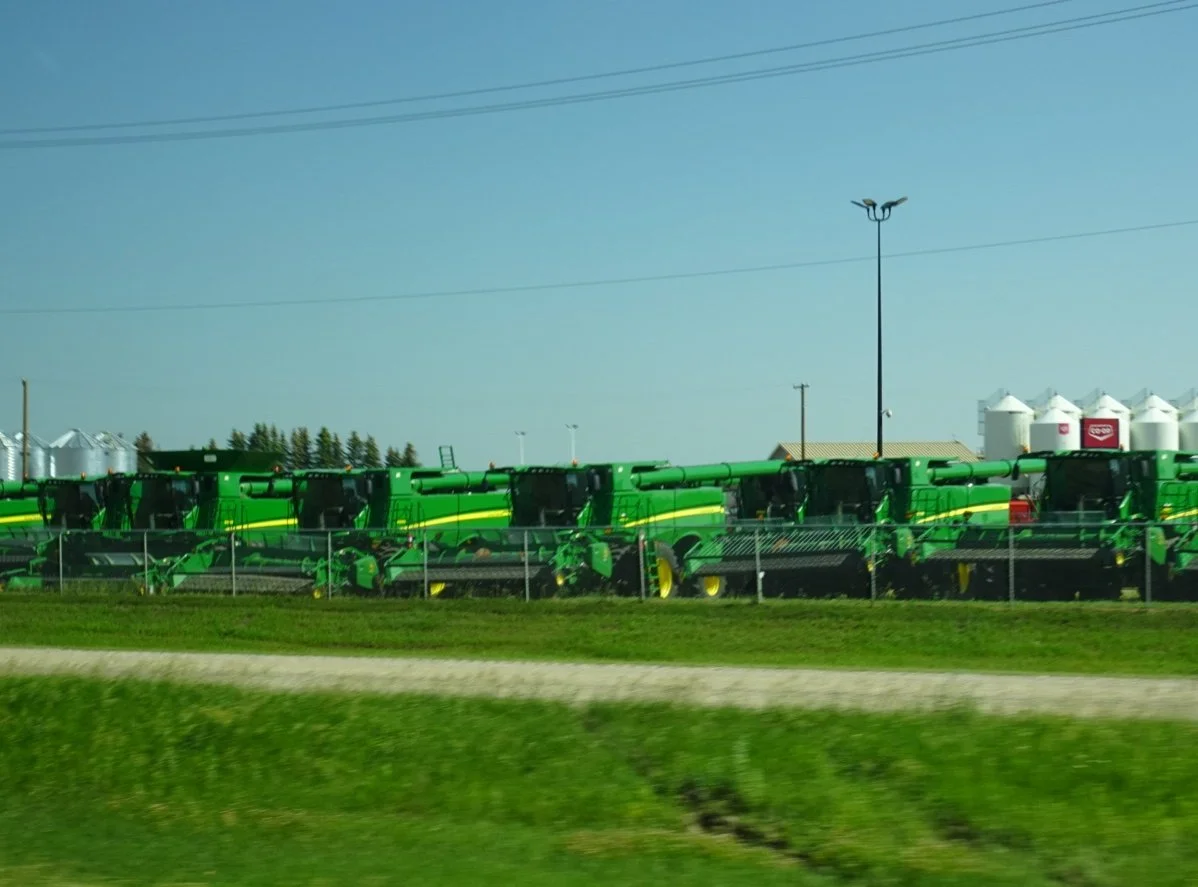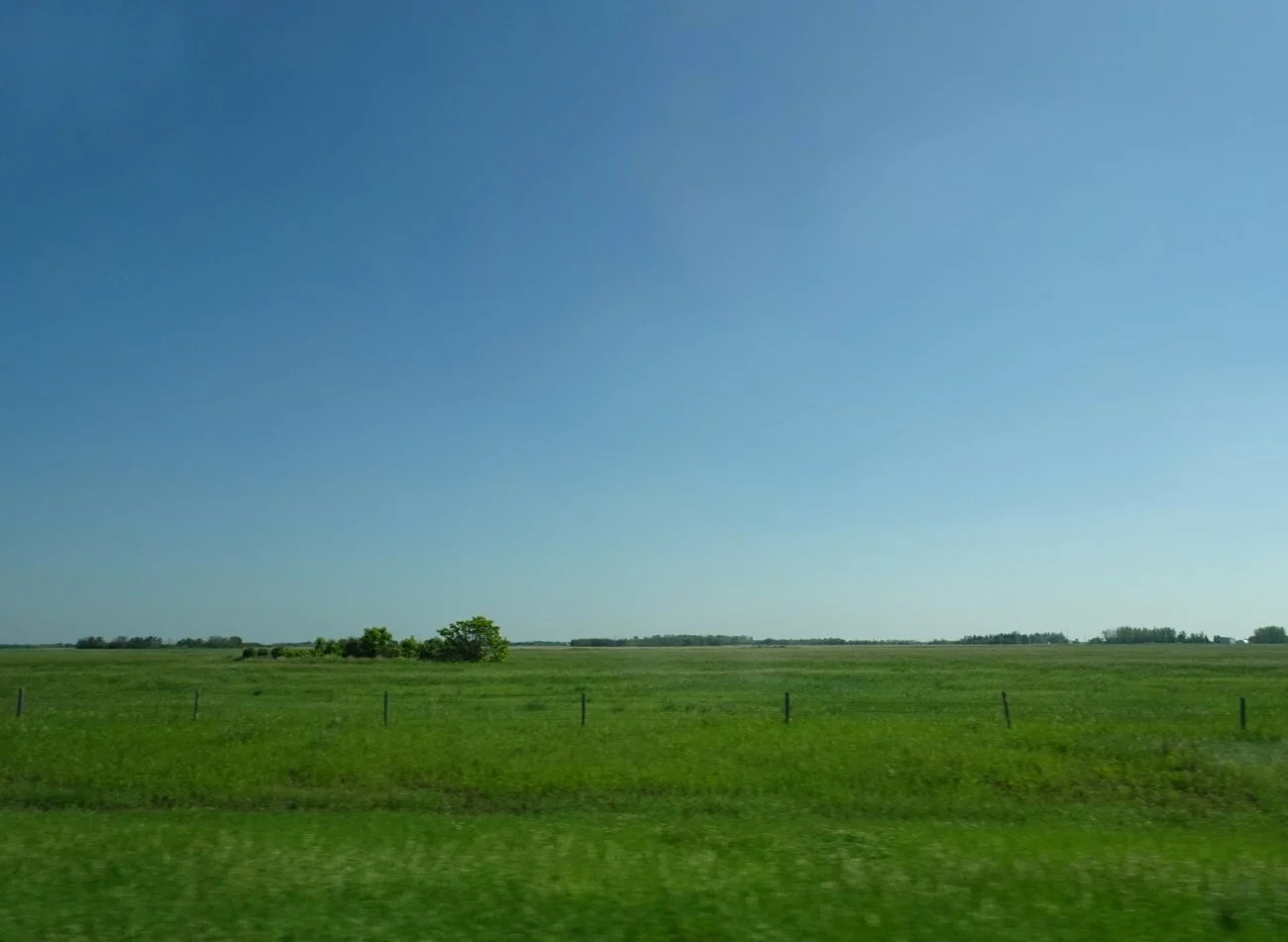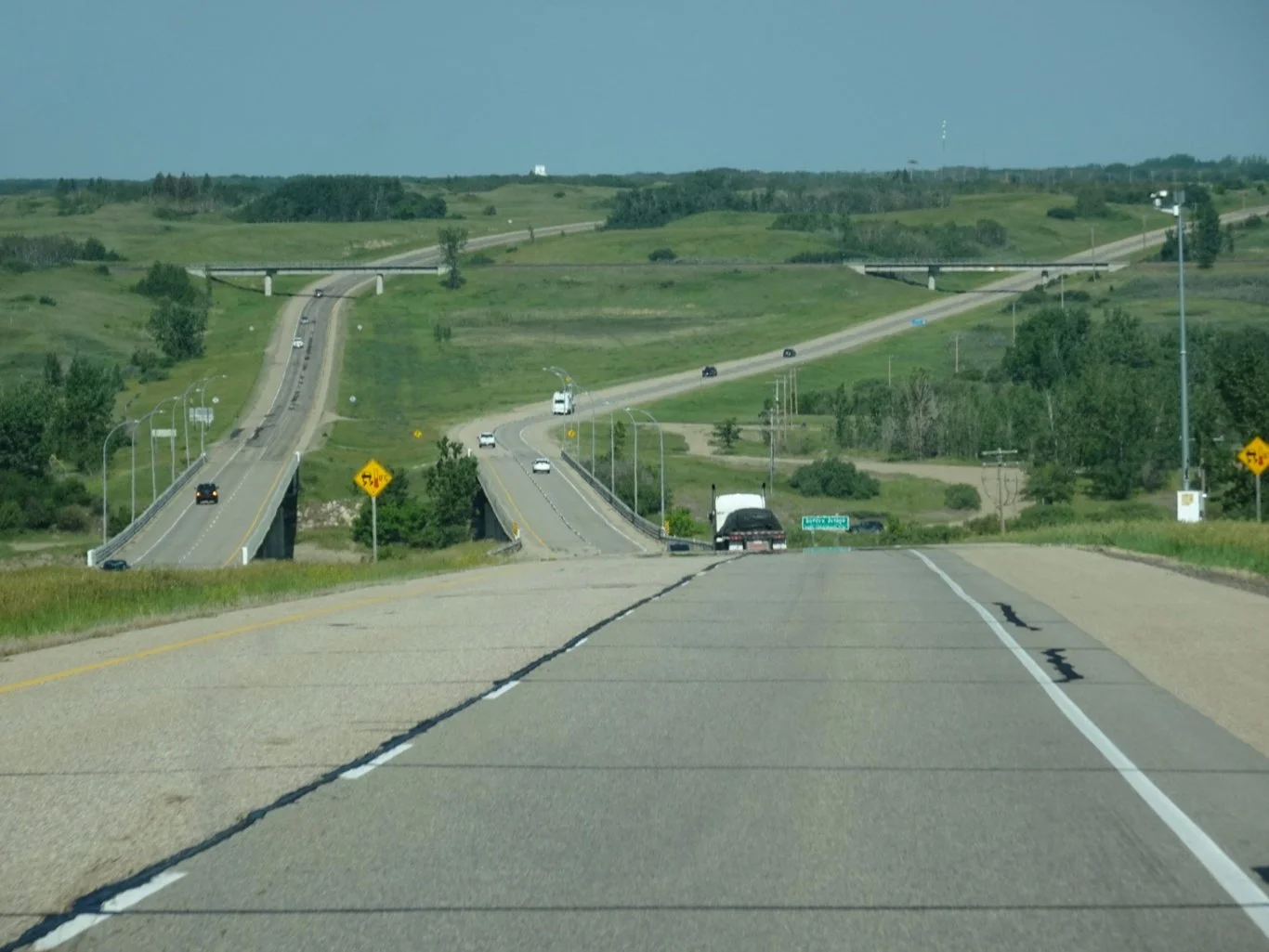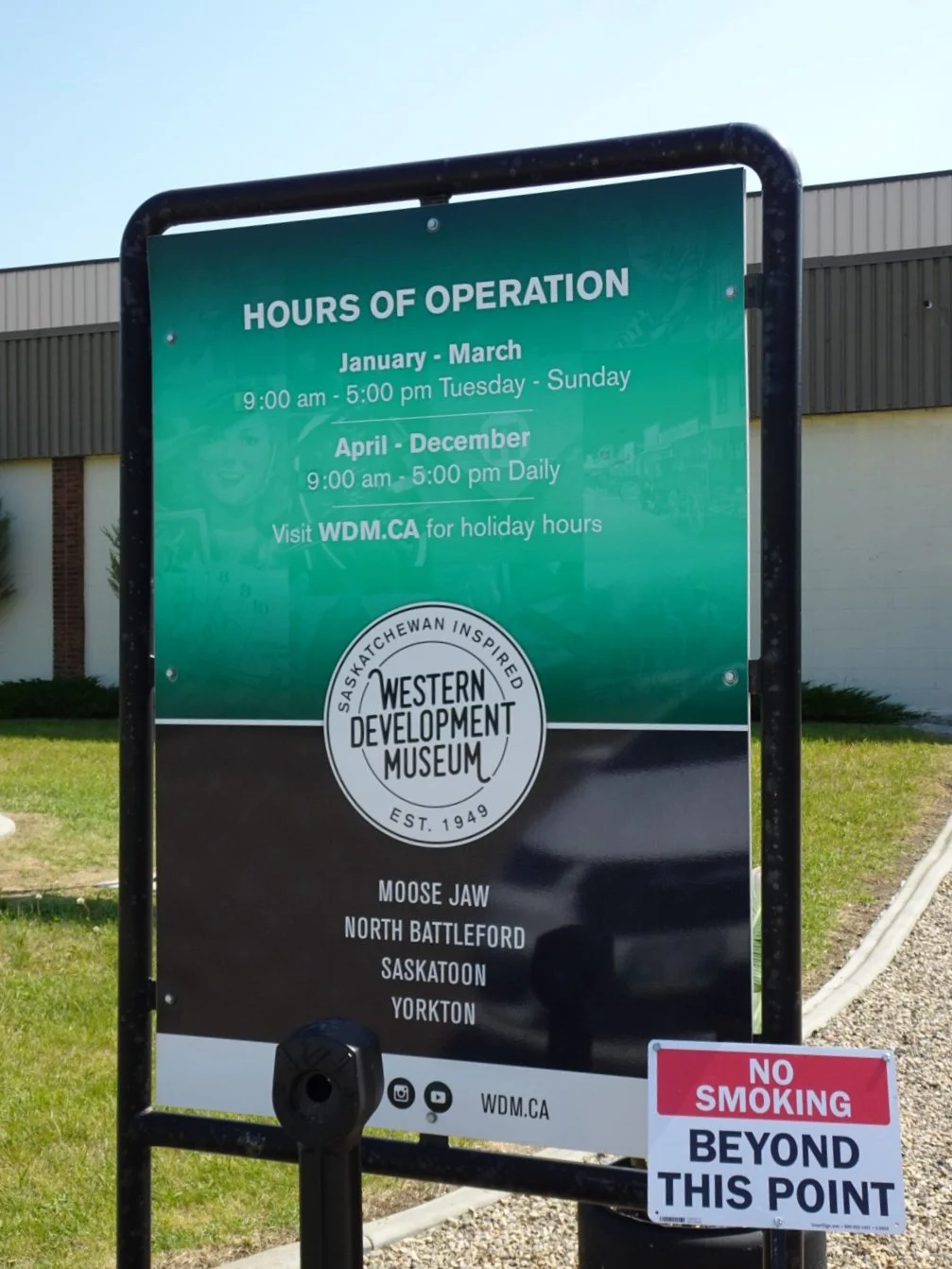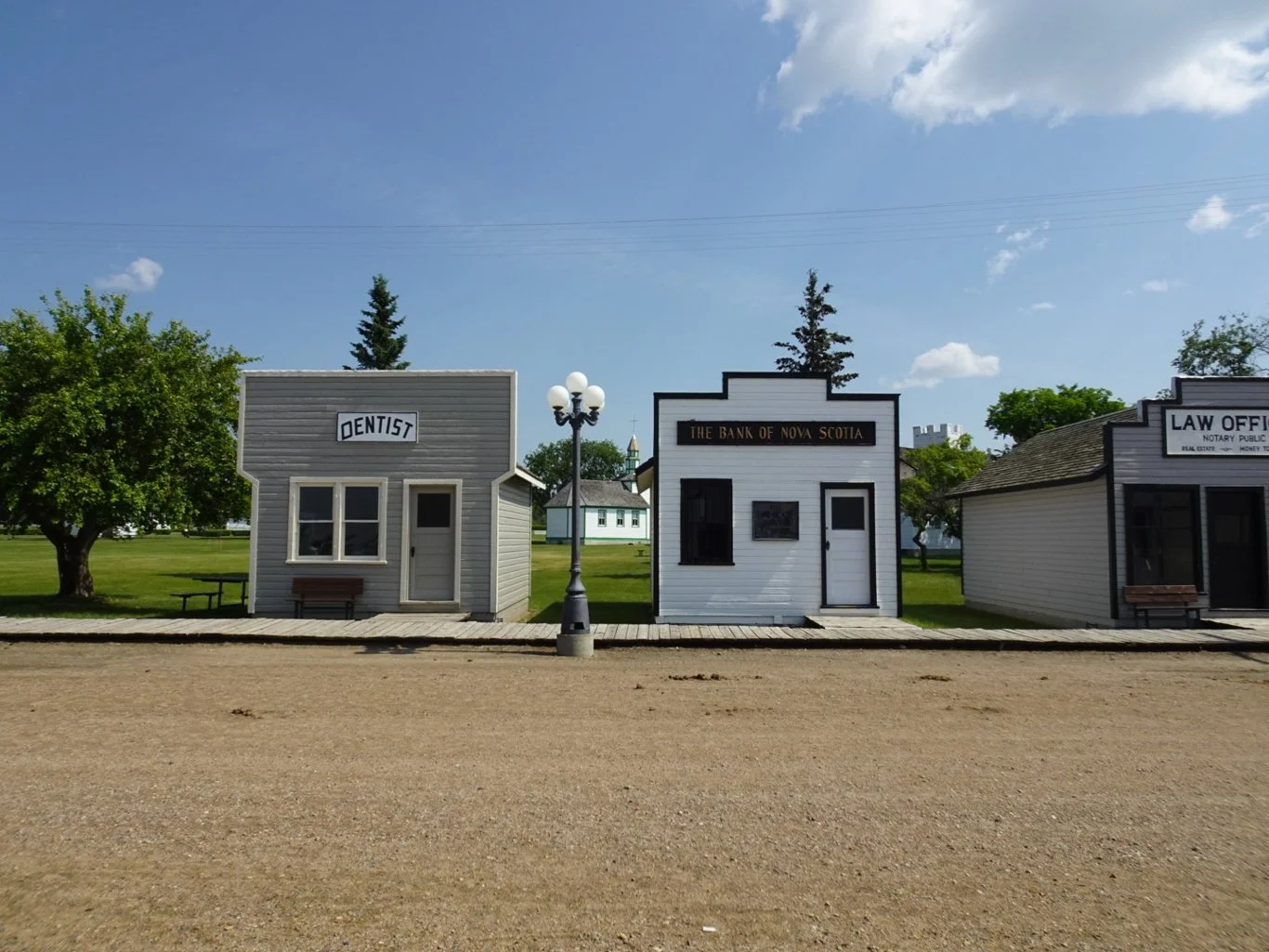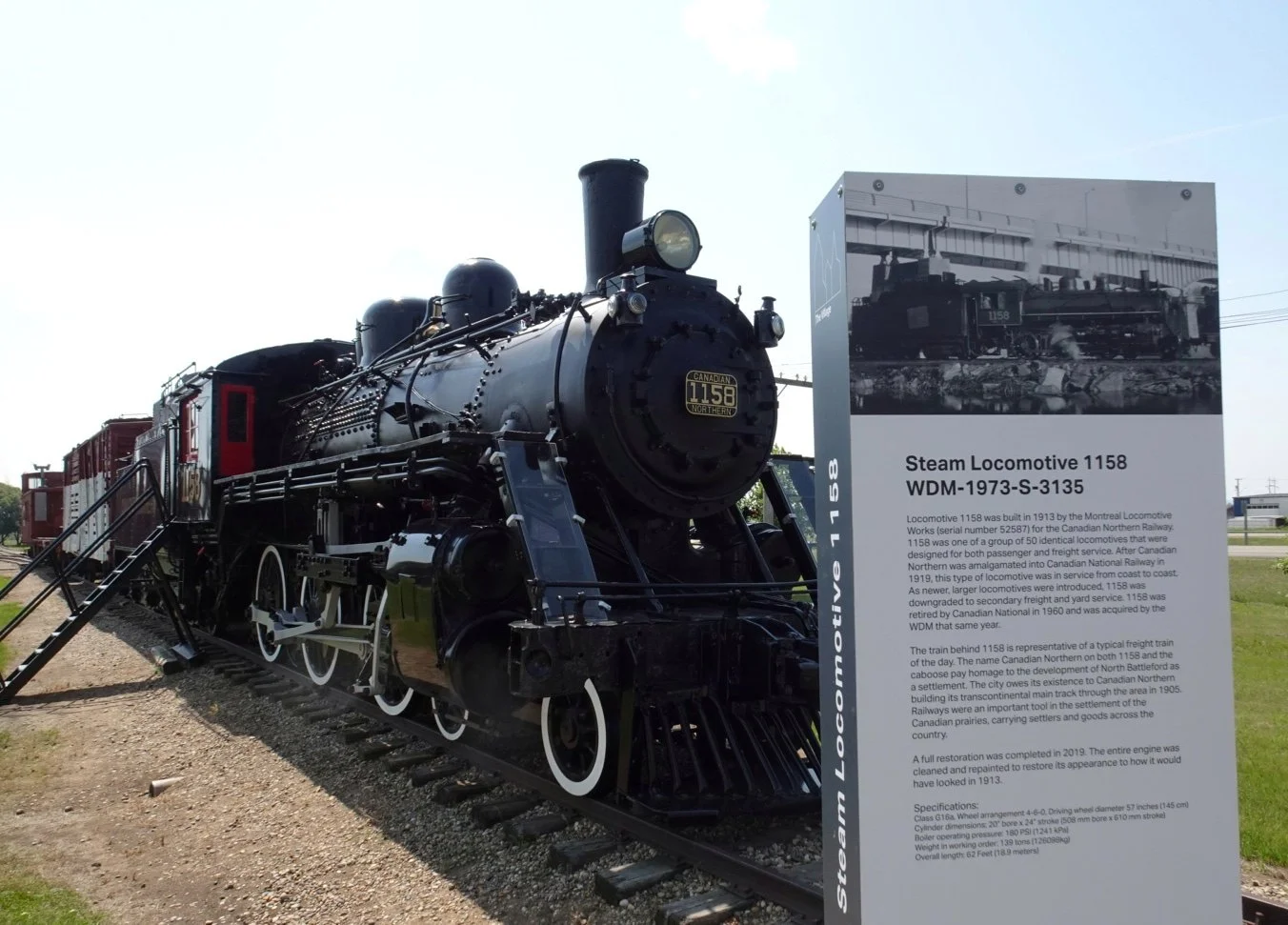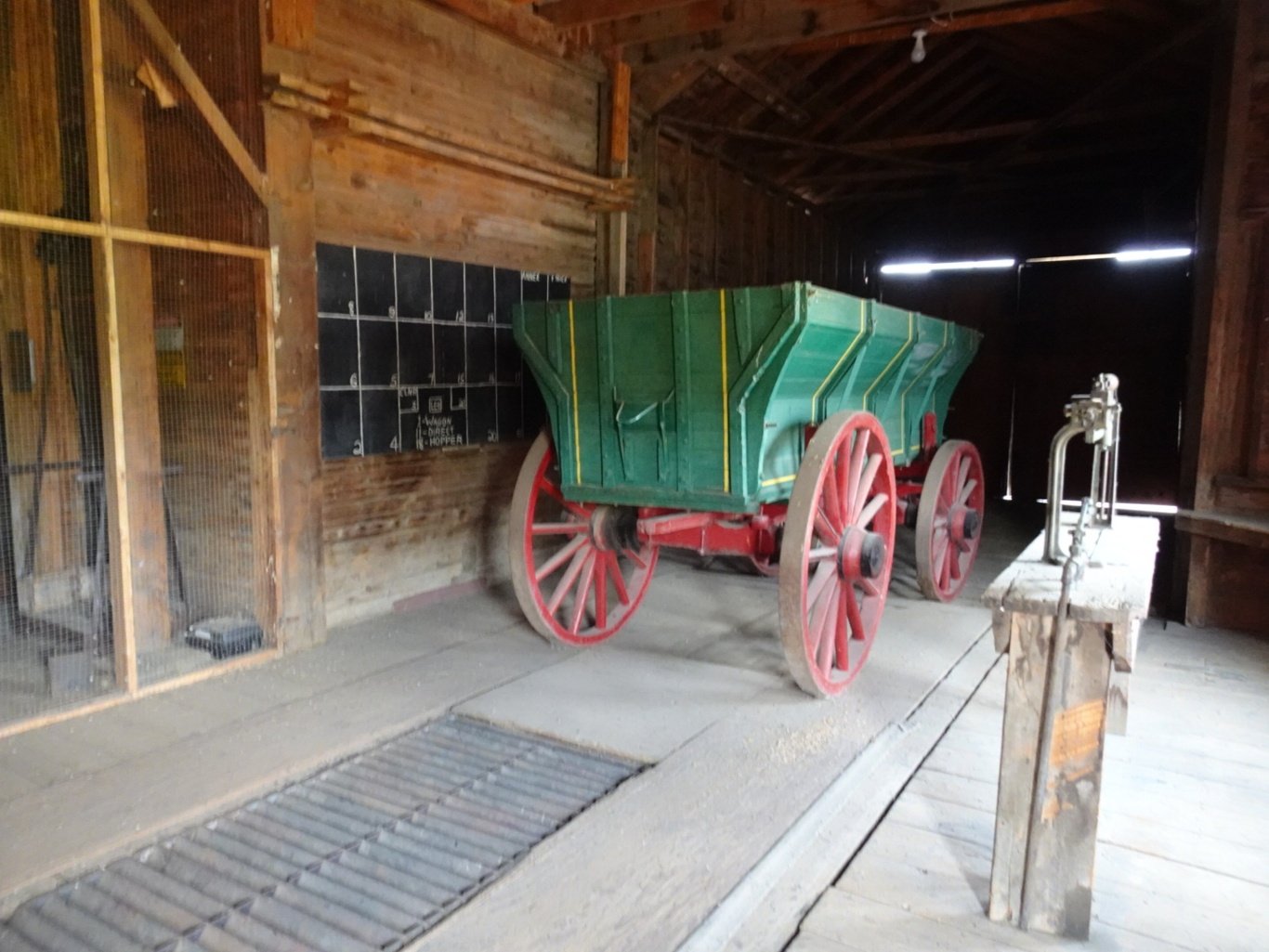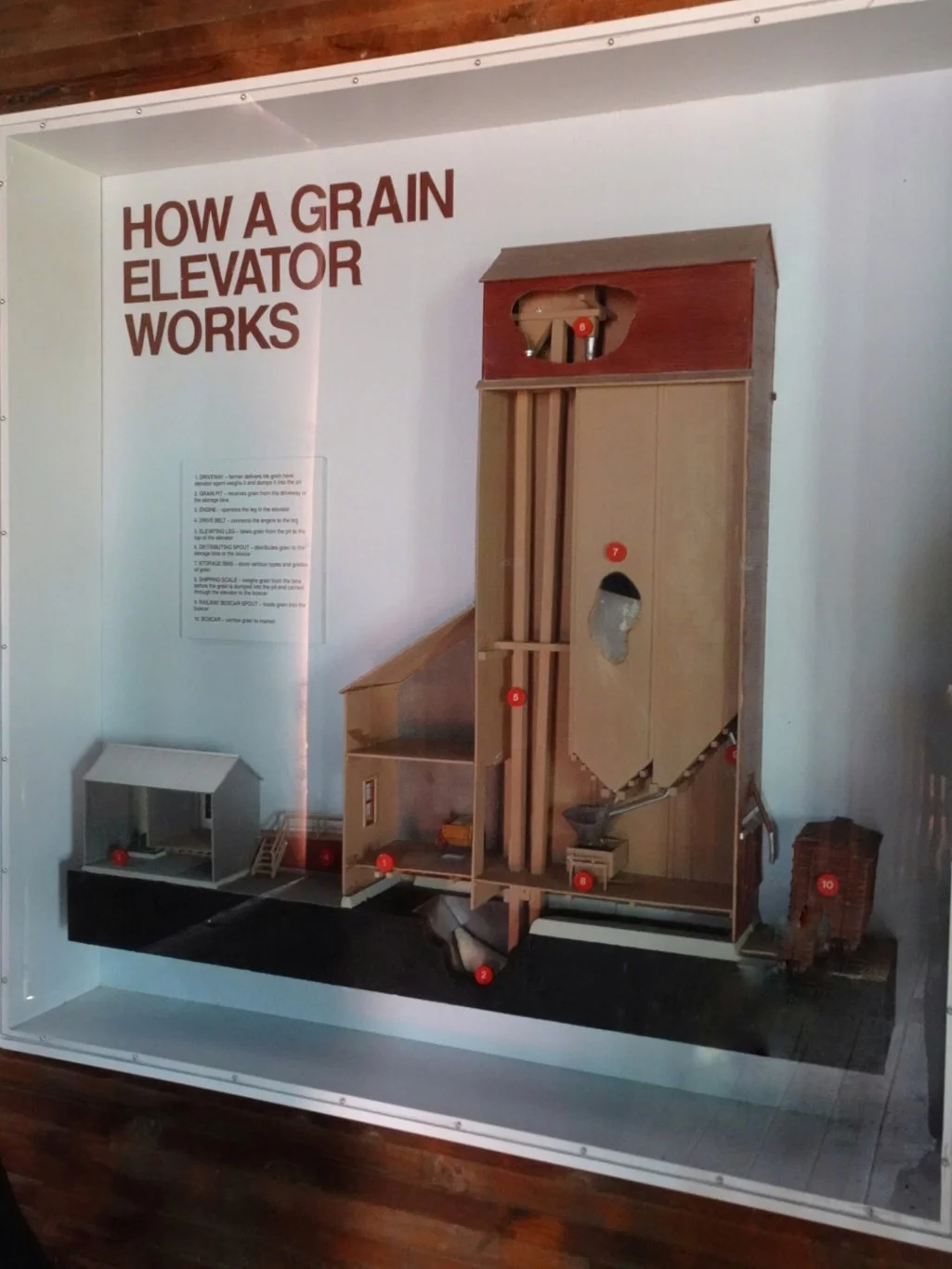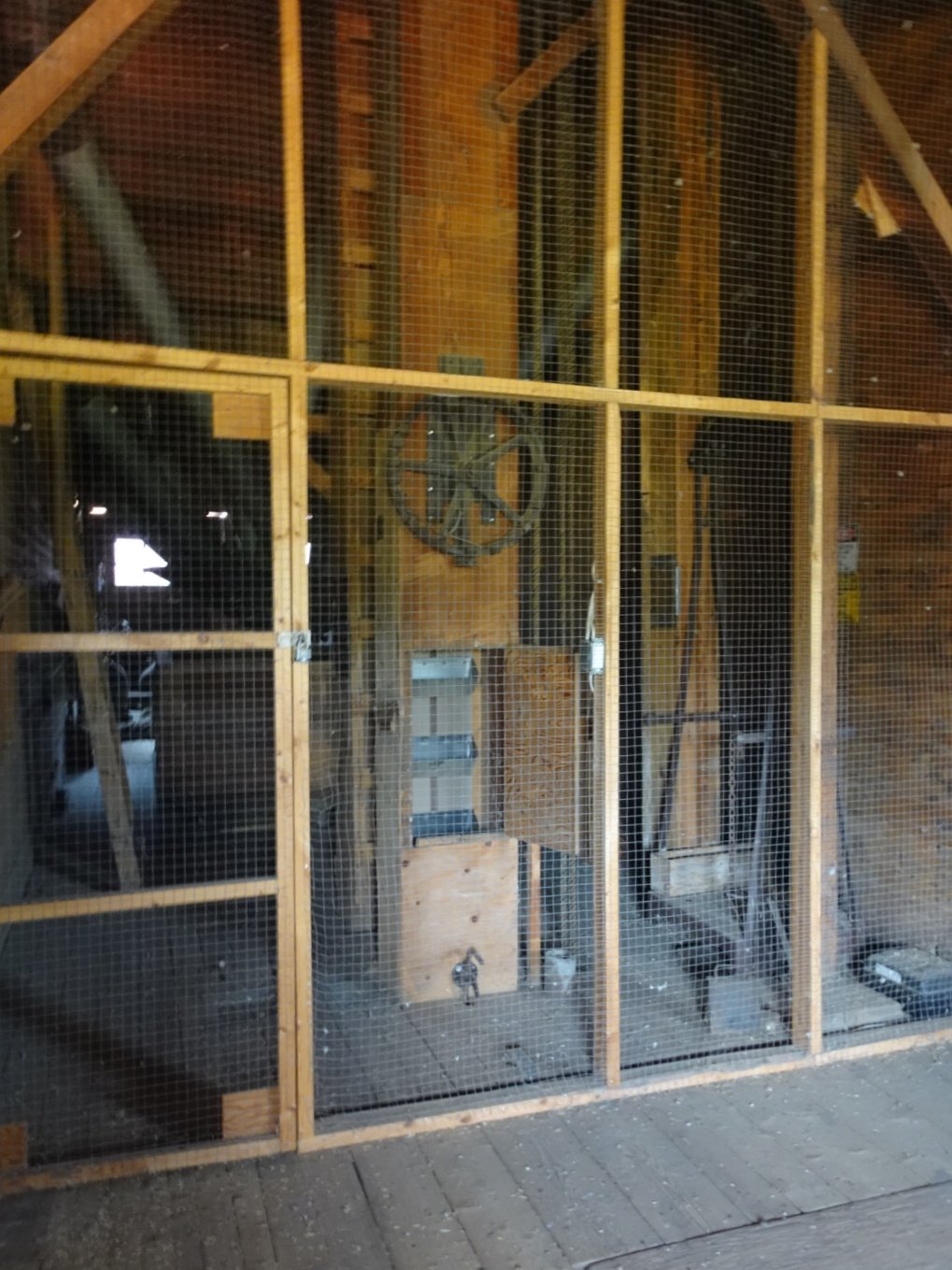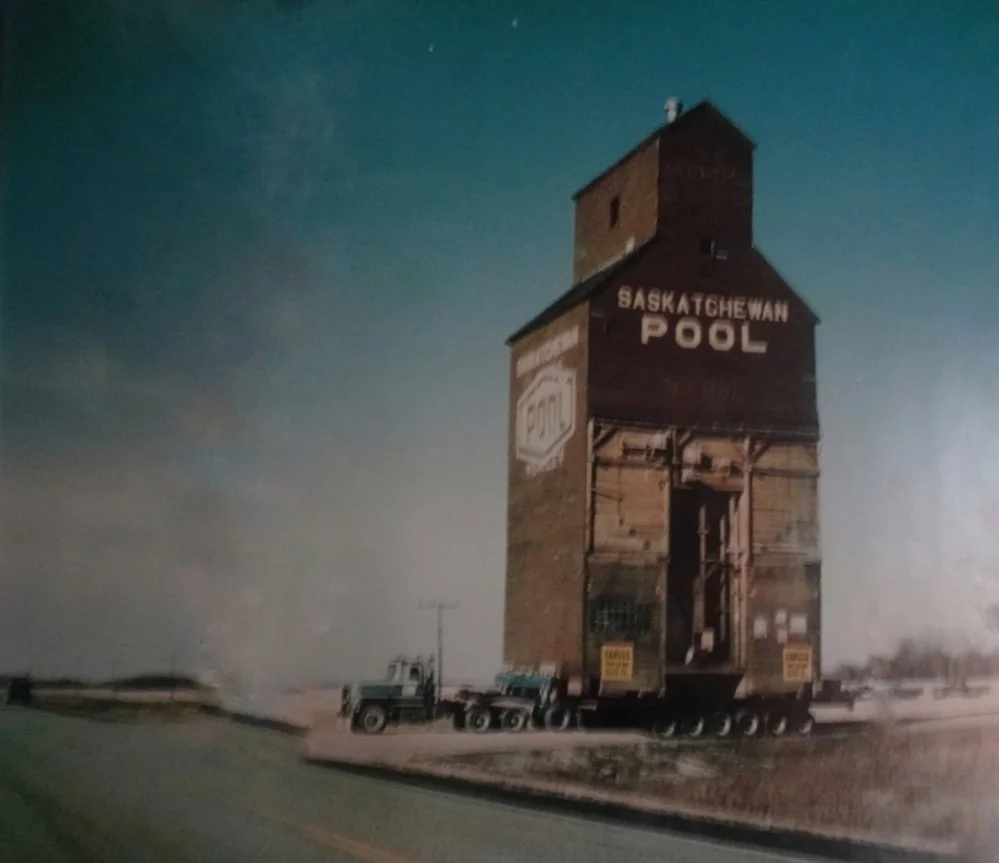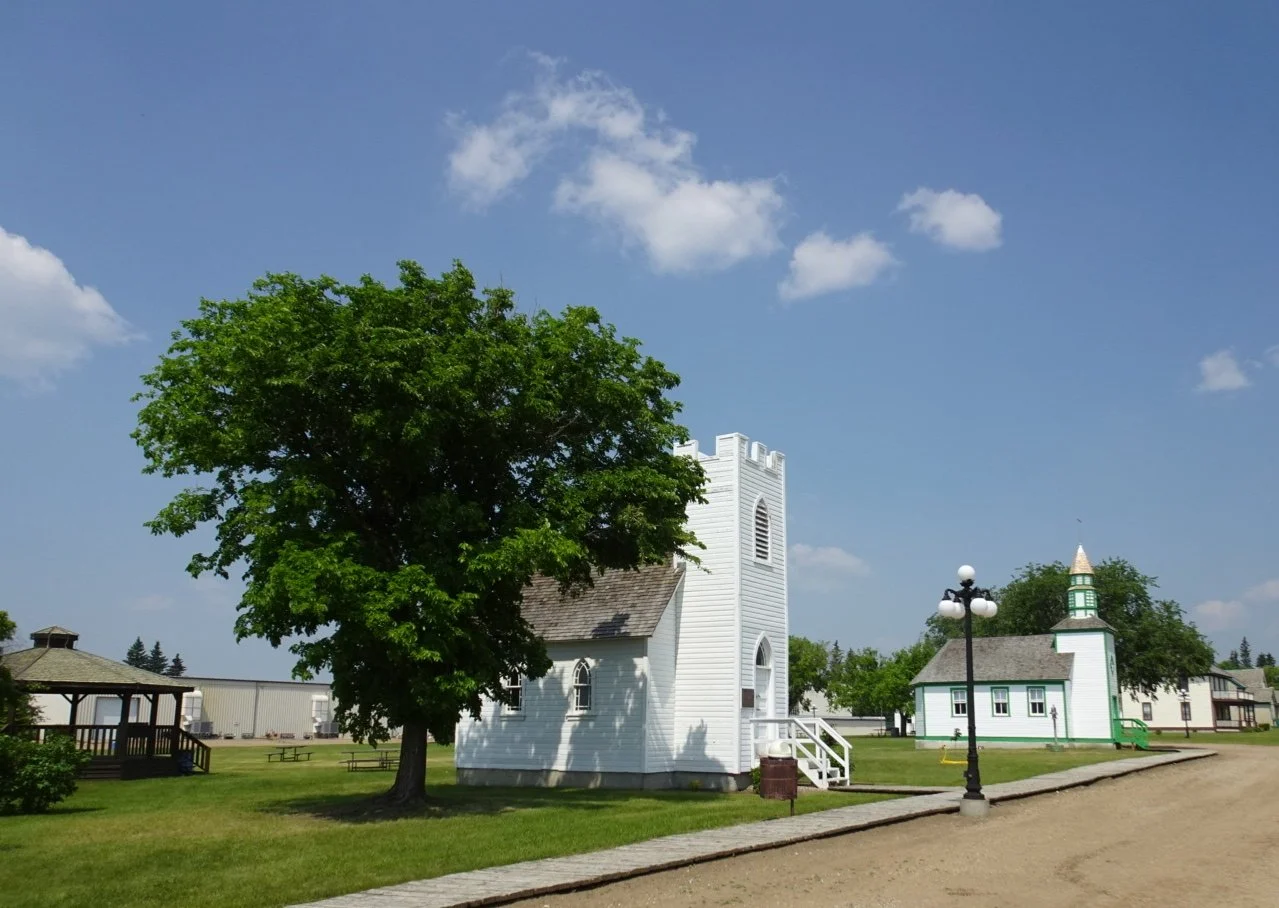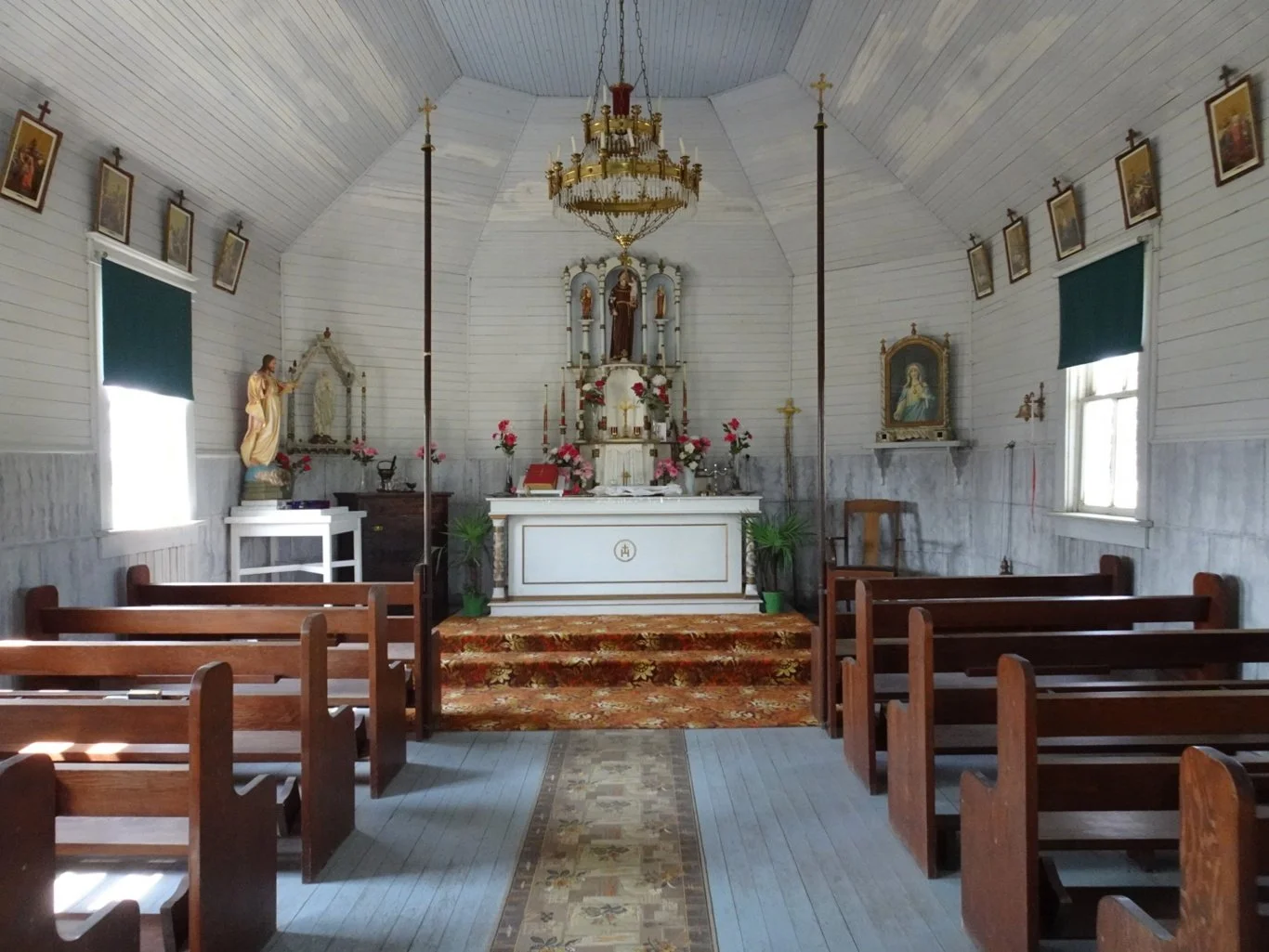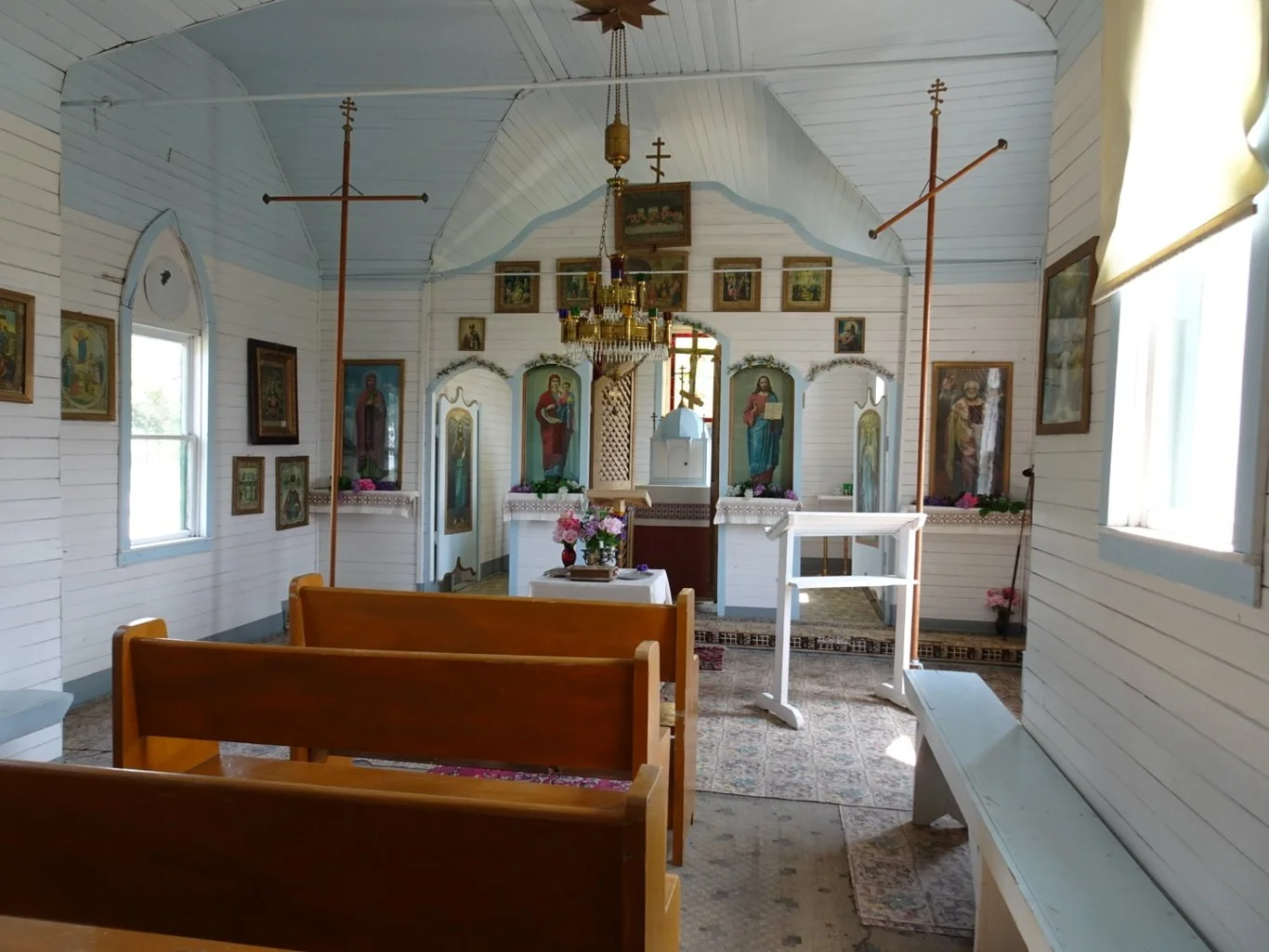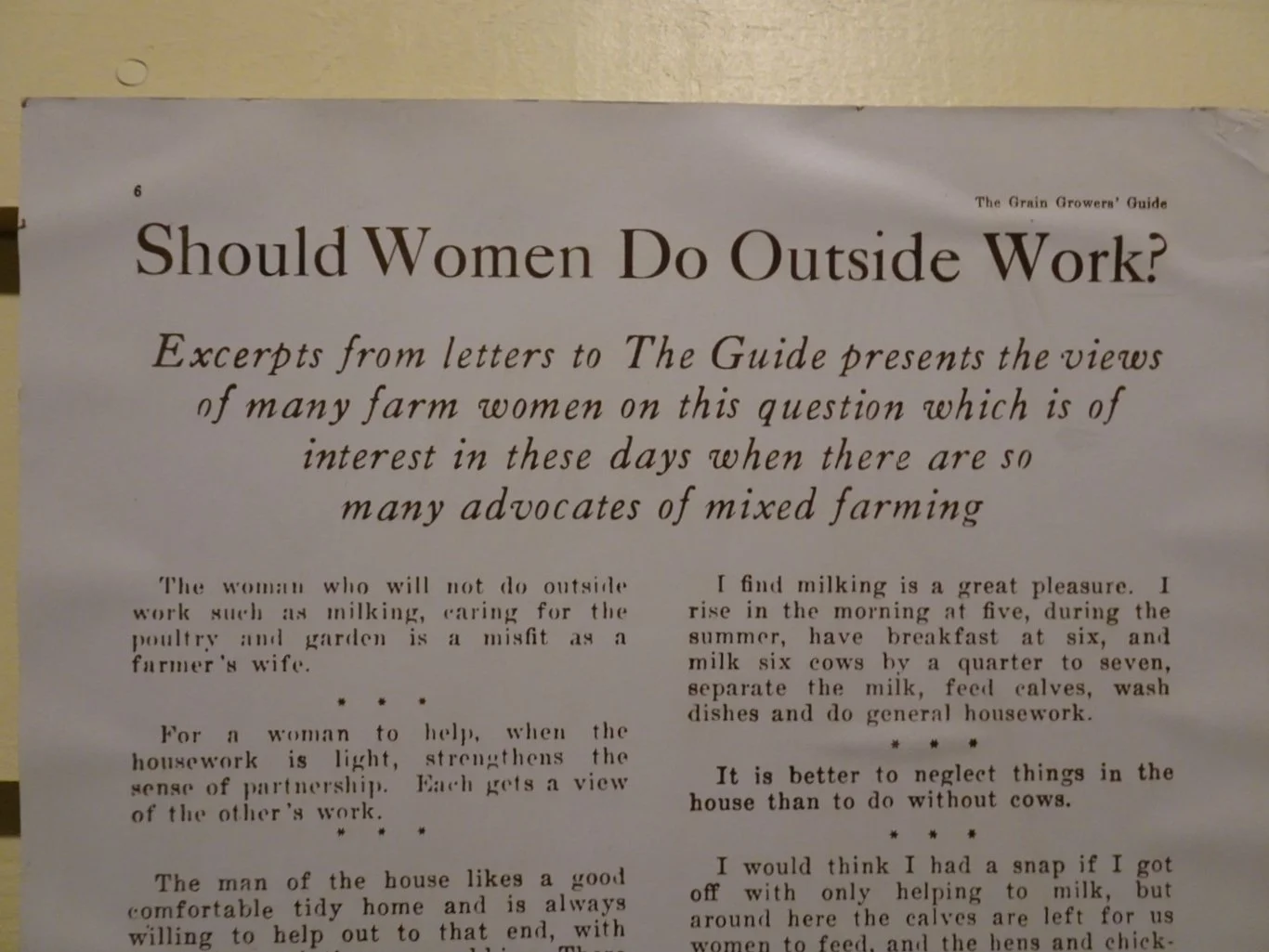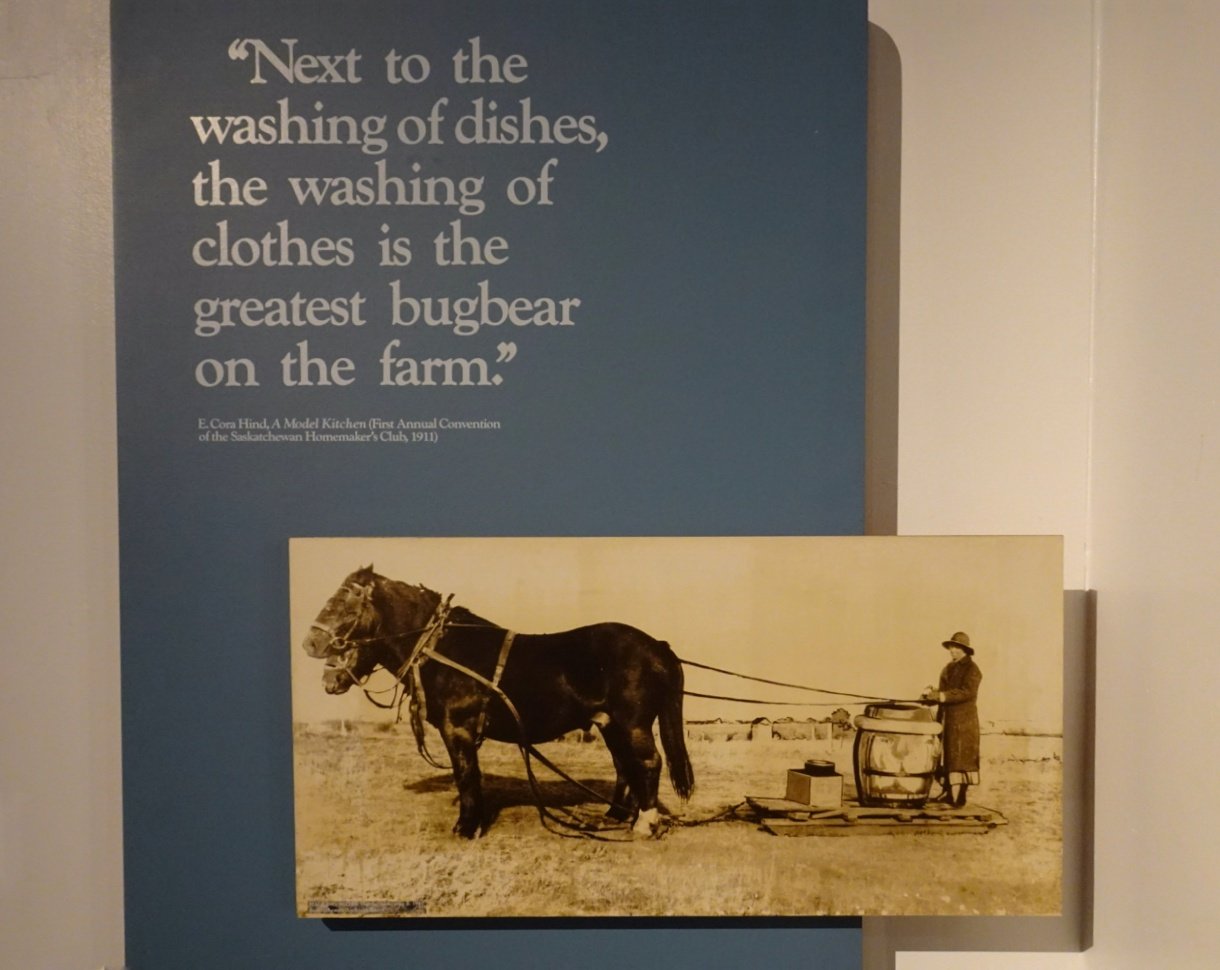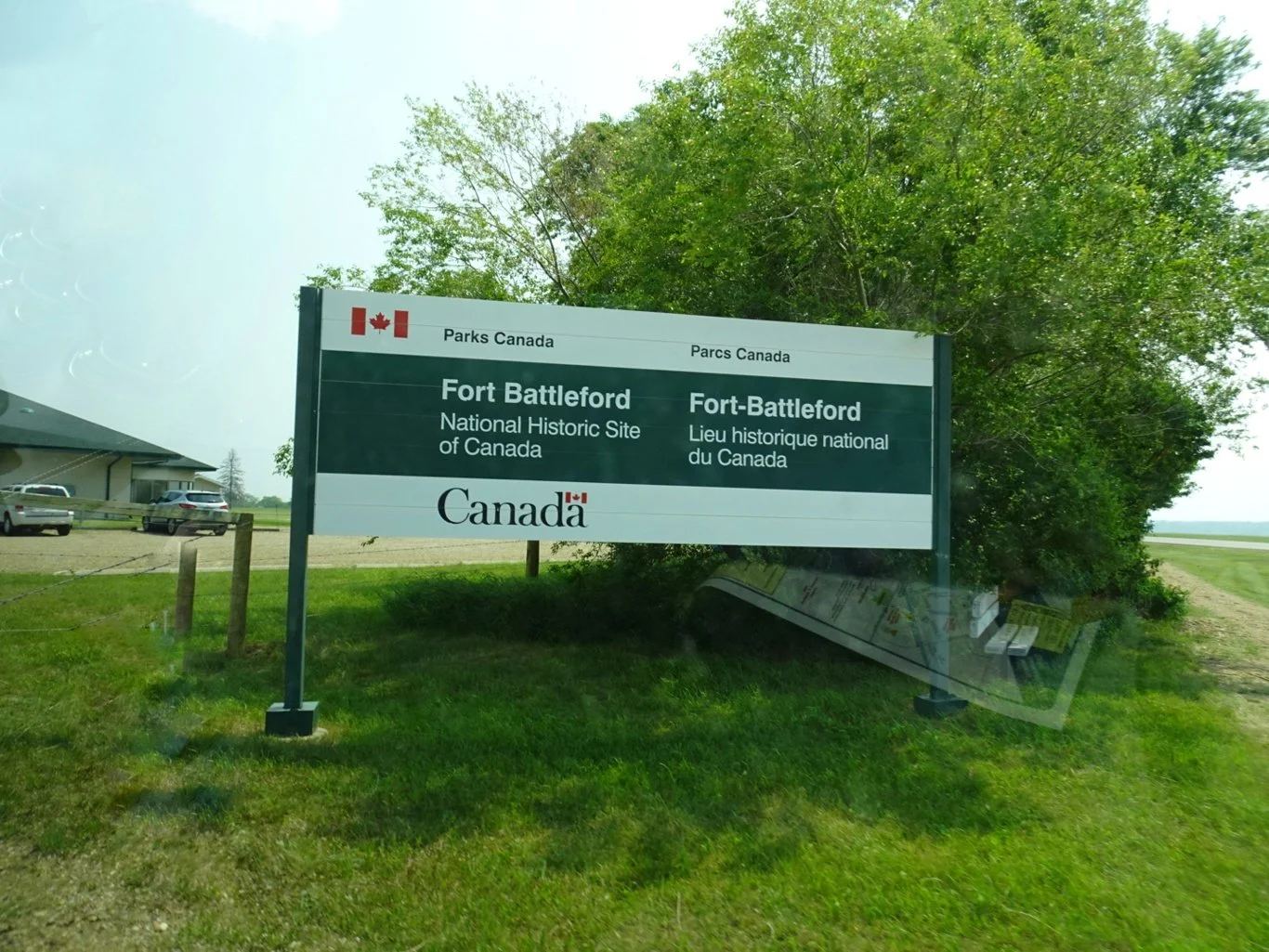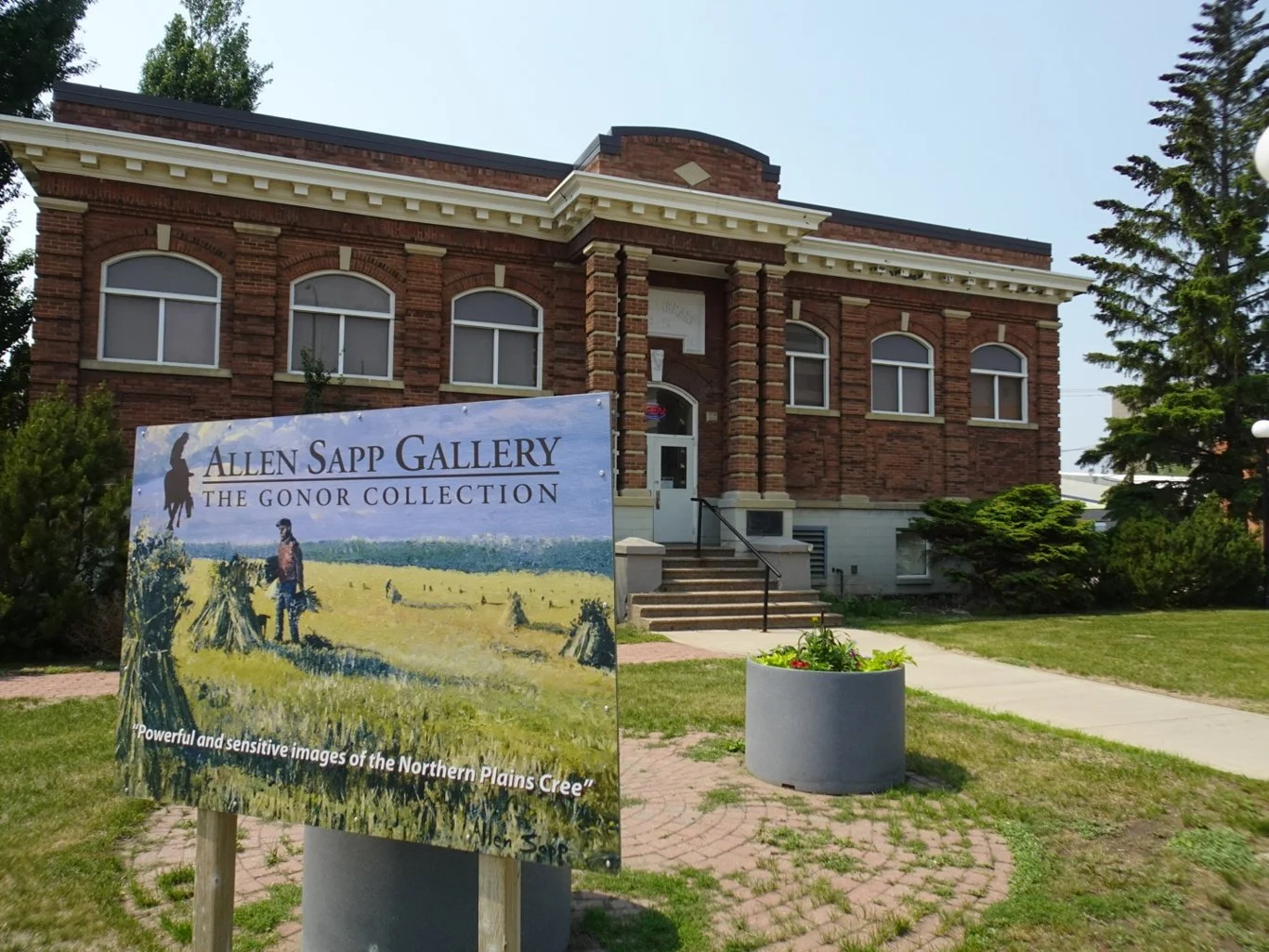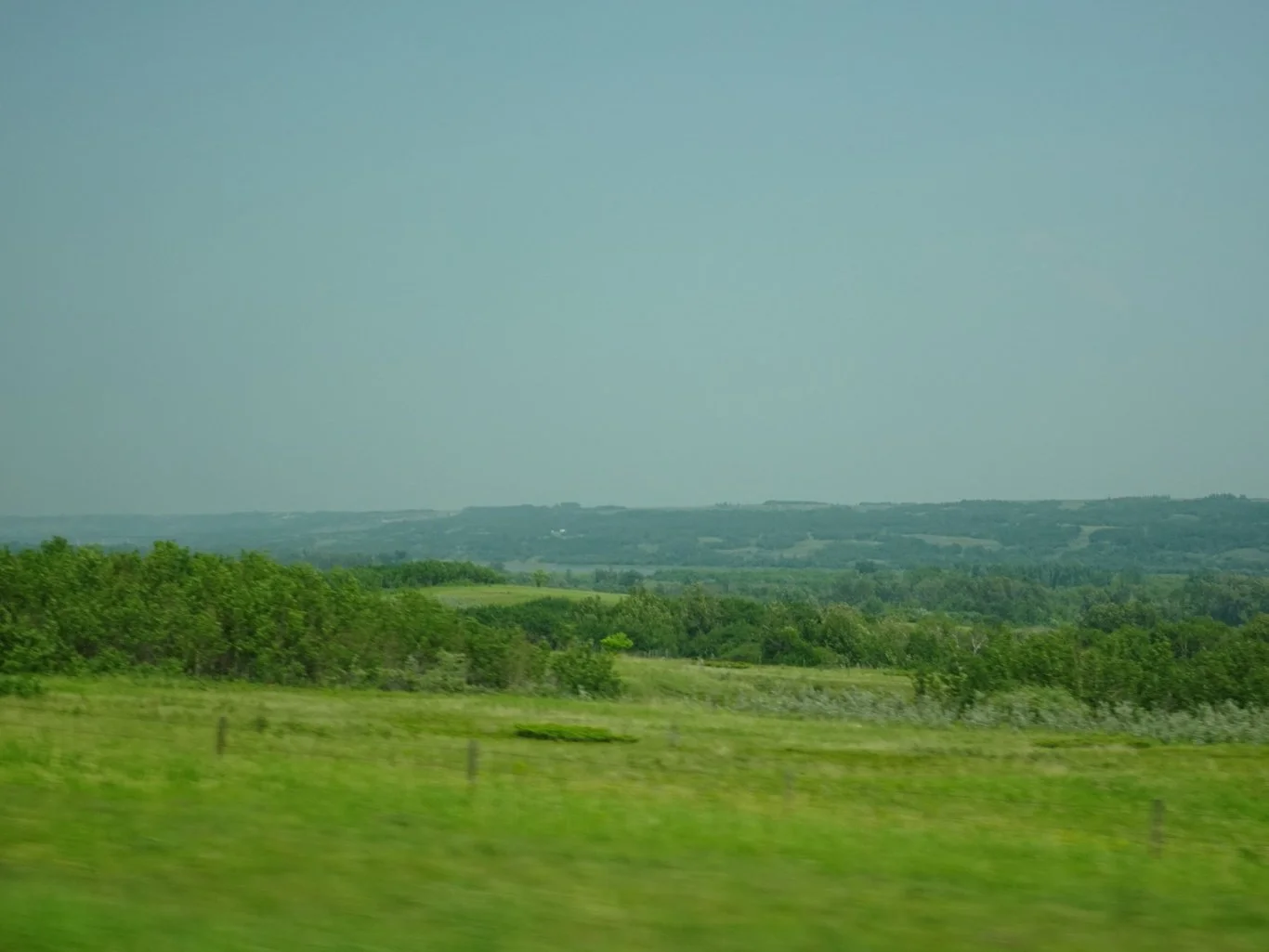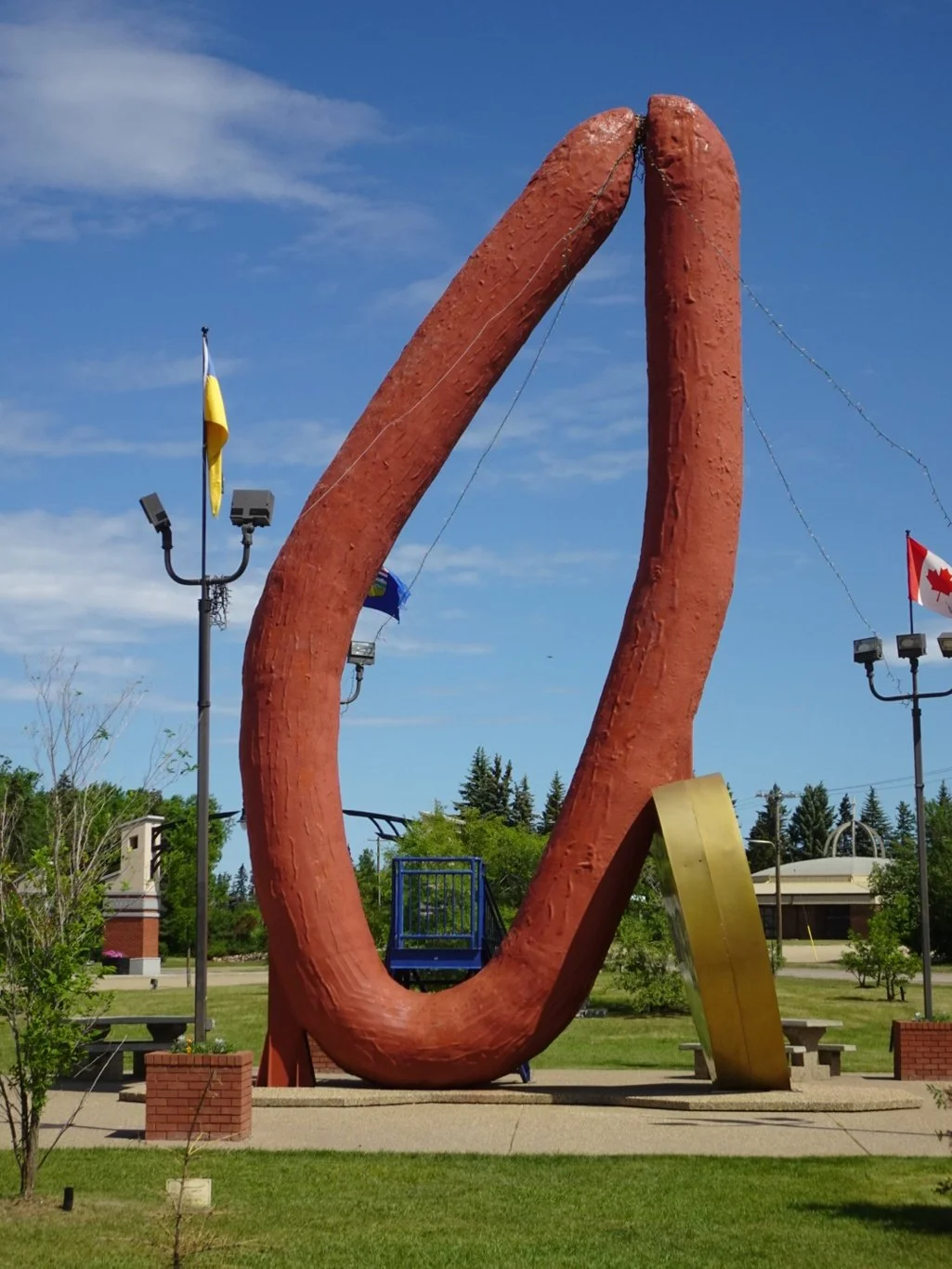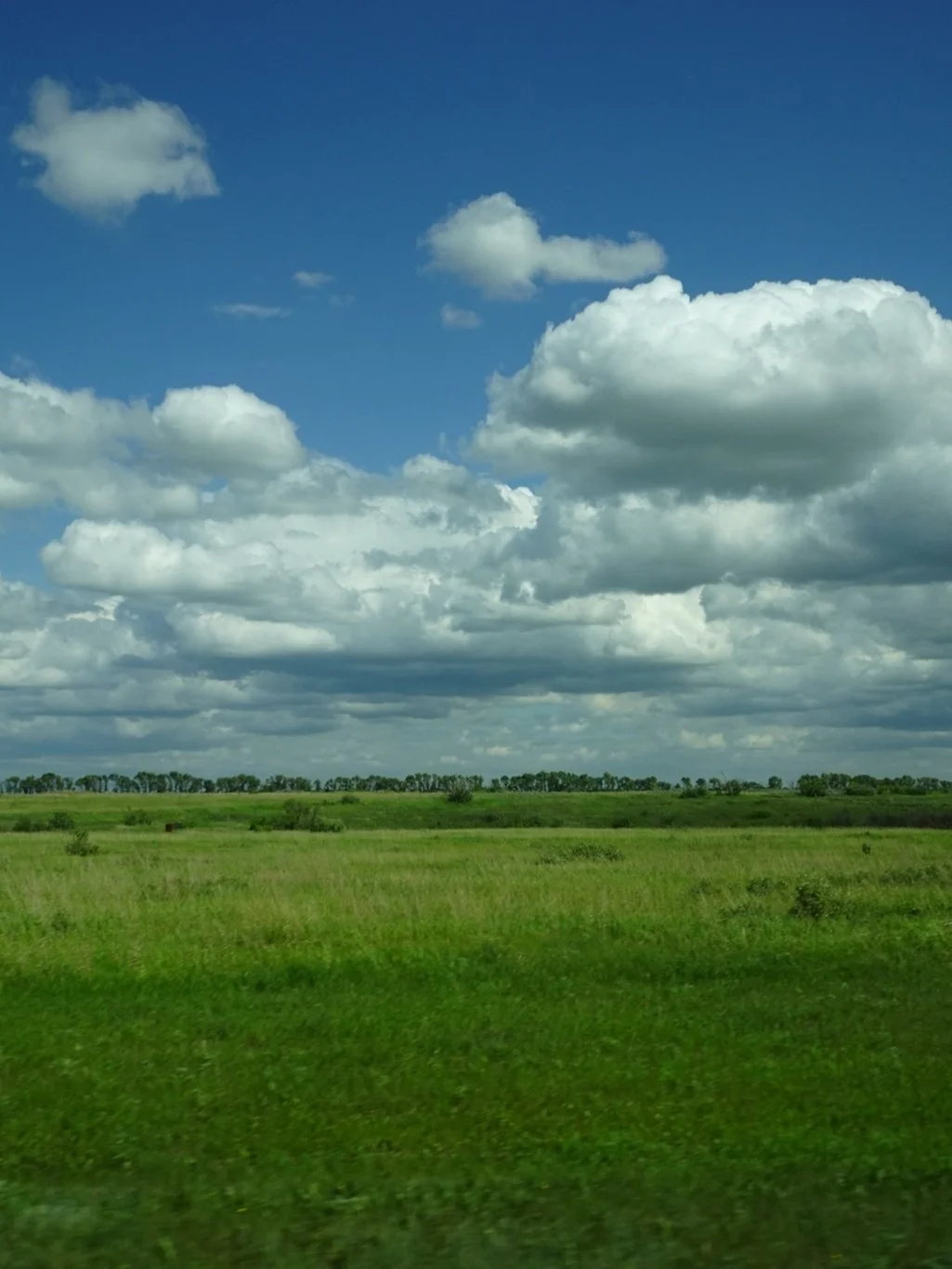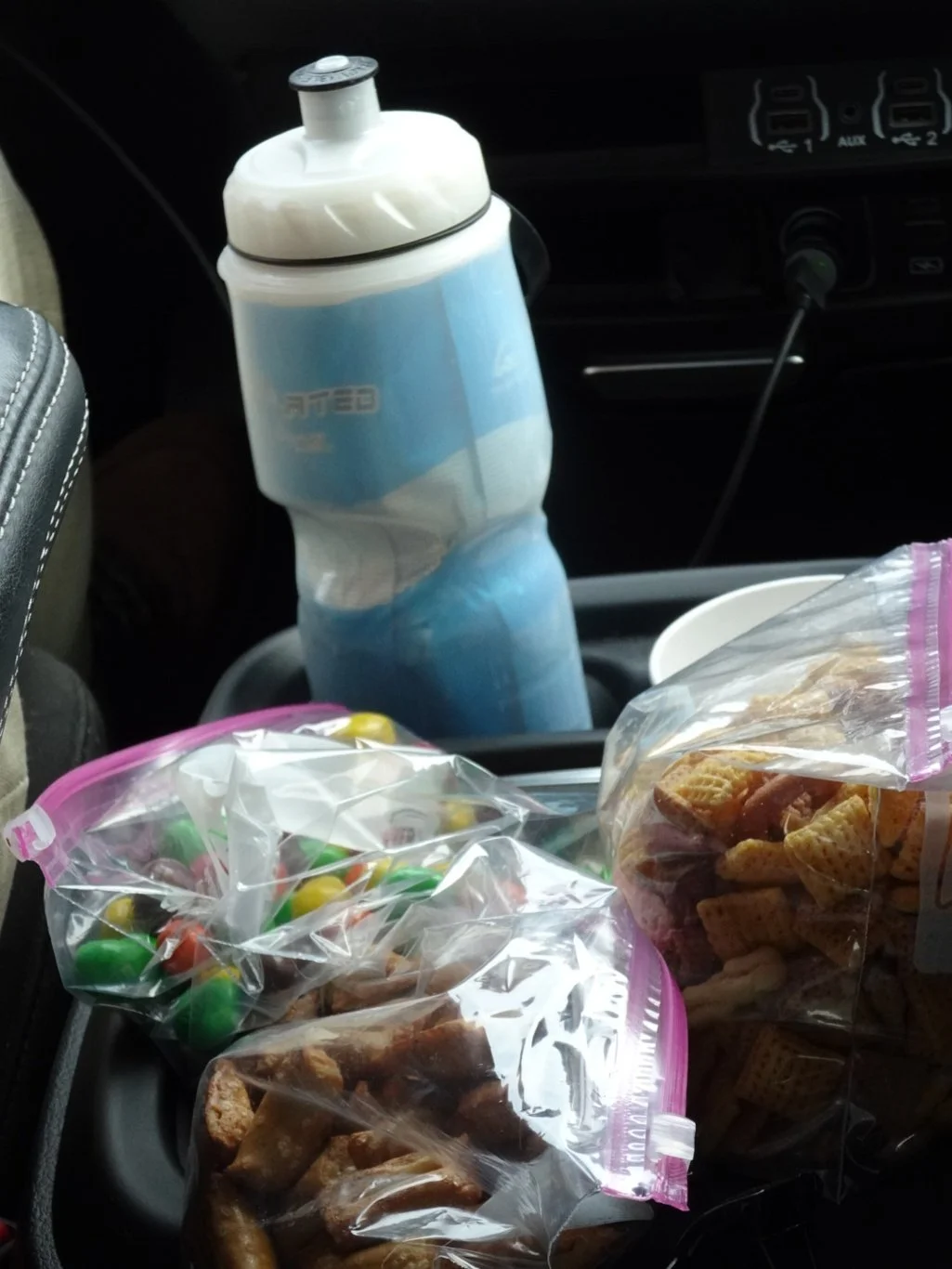The Grain Elevators of Saskatchewan
We didn’t imagine the focus of our day would turn out so, but that’s the joy of travelling, isn’t it?
We packed and left Saskatoon this morning, on the first part of the last bit of our road trip.
I was able to get a half decent photo of the Remai Modern gallery as we passed by, noting those large glass windows on the corner, from where I took the photograph yesterday..
I find it amusing that, where other communities might have a series of car dealerships on the route out of town, here in Saskatchewan the dealerships are for John Deere, New Holland and other agricultural vehicle manufacturers. If I was in the market for a new combine harvester or tractor, there would be no better place!
It was another blue sky day today, the clouds of yesterday had gone and the temperature had returned to “warm”.
We were heading westwards, on the Yellowhead Highway towards Edmonton. Today, we were planning to go as far as Lloydminster.
We had identified The Battlefords as a possible place to stop for a break, partly because of the Western Development Museum there. By the time we reached there this morning, after a couple of hours driving, we were ready to stretch our legs and get a breath of air.
One of their prized exhibits just happened to be a grain elevator, too, so we prepared one or two questions we’ve posed over the last few days in readiness for our visit.
The museum is a collection of pioneer buildings set out in a large parkland, together with a few vehicles and some room sets from the days of the early part of the twentieth century. It would be quite easy to spend the day here, though of course, we didn’t have quite that much time.
We decided to head for the main event right away then, though on the way to the furthest corner of the park we just happened upon this grand steam locomotive which might have caught the eye of the railroad enthusiast amongst us.
OK, enough of the trains. Let’s get to see what we came to see and find out what we want to know! Just how does a grain elevator work and why are they called “grain elevators” anyway?
In common with all the other buildings in the park, the door was unlocked and we could go right in. Had we not been the only people in the park this morning and had come here at a busier time, then we could have seen this elevator working, but today all was quiet and we were happy to trade that for having the place to ourselves.
Inside was a cart on a weighbridge, as it would have been when it delivered a load of grain here. We could see the grille that the grain would have passed through and the scales used for calculating the size of the load of grain.
What happened next was clearly described in a model nearby (and on a website here), and as we followed the process through, we learned “so that’s why it’s called an elevator!”
The working parts were all visible and didn’t need to be running for us to see how it all worked. But whilst I was looking at all of this, someone had spotted something interesting on the wall…
A photograph of the day when this grain elevator had been moved here on a low loader! Imagine transporting a 23m tall structure on the back of a lorry, driving along the motorway with it. What happened if a gust of wind blew!? An article here offers a few more details of the background of Saskatchewan Grain Pool Elevator 889 and why it’s such an important piece of local history.
Of course, there was more than the elevator here, so on our way back, we took a look inside a few other buildings, including three small churches, side by side.
First, St Mary’s Anglican church from Lilac, just up the road.
Next, St Anthony’s Roman Catholic Church, built by the Polish people for the community of Redfield.
Lastly, the Ukrainian Greek Orthodox church of the Holy Trinity transferred here from Hafford.
We returned to the car through the exhibition hall, finding a couple of interesting/curious things along the way.
It’s strange to think that this was ever a question, but clearly when the article was written in….? I failed to note the date, so did a search online and was surprised to find it’s still a discussion point. Hmmm.
But it was this comment and the accompanying photo that provoked the question, “What is that woman doing?” (Answers in the comments please!)
From here, it was at least another hour and a half to Lloydminster, with nowhere interesting enough en route to make a stop. We decided to spend another hour or so here in the Battlefords at a National Historic Site across the river.
When we arrived at Fort Battleford though, a couple were returning to their RV in the car park, shrugging their shoulders. They called over to us “It’s closed!” and were clearly as disappointed as we were, having made a journey here. They’d driven from east of Montreal, on a road trip to the Yukon (!) That put our short trip into perspective - but imagine, two and a half months in a small RV; around 12,000 km round trip along the kind of roads we’ve been driving?!
We had an alternative up our sleeve and, recommending the Western Development Museum to them, we wished them safe travels and said ‘bye.
We headed back over the bridge to the Allen Sapp Gallery. Knowing nothing about the man and his work, we were receptive to learning about him and seeing his art. It wasn’t a disappointment. There were a couple of his paintings that we both liked, each one atmospheric and very resonant of this landscape. No photographs in the gallery however, so although we can’t find the exact images, Artnet offers a flavour of the kinds of work which we found appealing.
From there, it was another hour and a half or so to Lloydminster, a city straddling the Saskatchewan/Alberta border, filled with hotels for people like us, it seems, breaking a long journey. We’ve just enjoyed a good dinner across the way at Three Trees and look forward to our final day driving to Edmonton tomorrow.
First, a good night’s sleep.







